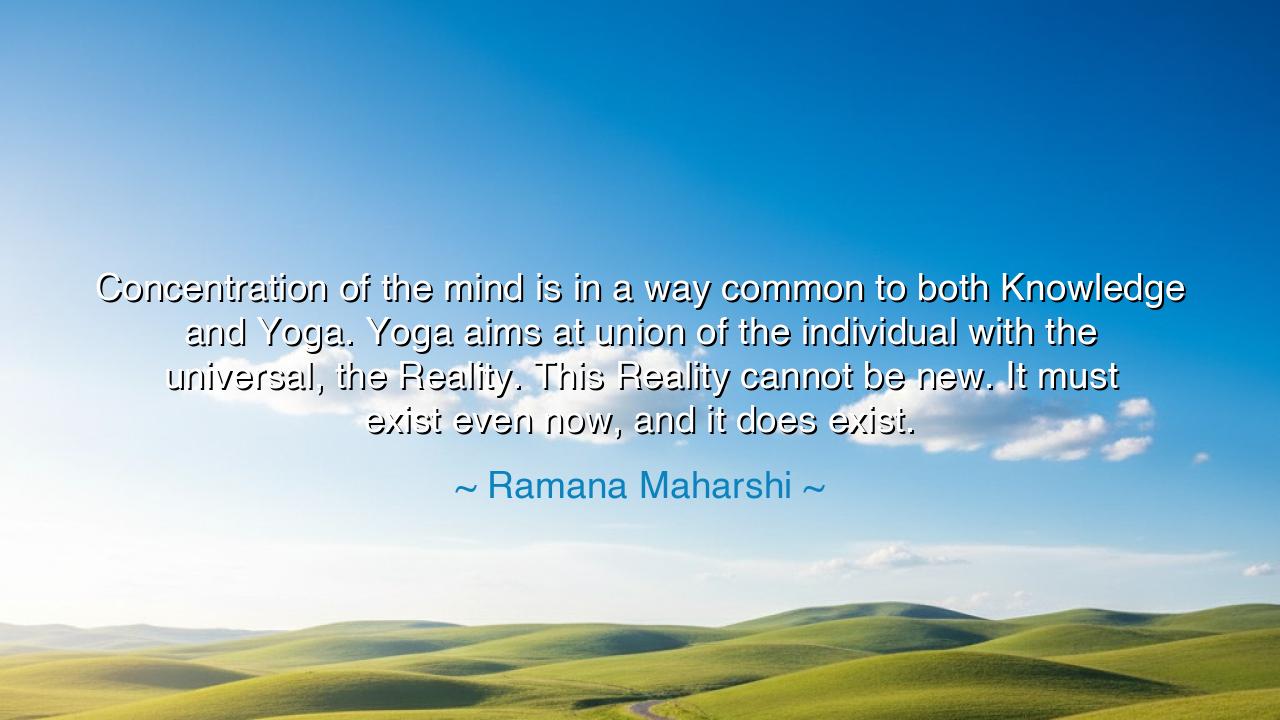
Concentration of the mind is in a way common to both Knowledge
Concentration of the mind is in a way common to both Knowledge and Yoga. Yoga aims at union of the individual with the universal, the Reality. This Reality cannot be new. It must exist even now, and it does exist.






Ramana Maharshi, the silent sage of Arunachala, once uttered with serene power: “Concentration of the mind is in a way common to both Knowledge and Yoga. Yoga aims at union of the individual with the universal, the Reality. This Reality cannot be new. It must exist even now, and it does exist.” In these words he points not to some distant truth yet to be discovered, but to an eternal truth already present within us. He teaches that both Knowledge—the pursuit of wisdom—and Yoga—the discipline of union—require the same inward turning of the mind, the same stillness that allows us to perceive the Reality that has always been.
The origin of this teaching is found in India’s ancient tradition. Maharshi drew deeply from the Upanishads, where sages declared, “That thou art”—the Self and the Absolute are one. He himself, as a youth, experienced a spontaneous awakening: struck by the fear of death, he turned his mind inward and realized the Self as immortal, beyond body and thought. From that moment, he lived as a witness, guiding others to seek the same Reality through stillness, meditation, and self-inquiry. His words echo this: whether through study (Knowledge) or through discipline (Yoga), the goal is union with what already exists—the eternal Reality.
History gives us mirrors of this truth. Consider Siddhartha Gautama, the Buddha. For years he studied philosophies and practiced austerities, yet peace eluded him. Finally, beneath the Bodhi tree, he sat with concentration of the mind, letting go of striving, and discovered enlightenment not as something new, but as something always present. Like Ramana Maharshi, the Buddha realized that Reality is not created, but revealed when the mind becomes still and united with truth.
The meaning of Maharshi’s words is deeply evocative: he reminds us that the eternal is not far away. We do not need to invent God, truth, or Reality; we need only to still the mind and allow what is already there to shine forth. Just as the sun is always in the sky, though hidden by clouds, so too the Reality is always within us, though veiled by restless thoughts. Whether one seeks through philosophy (Knowledge) or through meditation (Yoga), the path is the same—concentration, silence, union.
This wisdom can be seen in the lives of saints and seekers across traditions. Thomas Merton, the Christian mystic, wrote that contemplation is not about learning something new, but about awakening to what is eternally present—the presence of God in the depths of the soul. Like Maharshi, he knew that true Reality cannot be new; it is the ground of being, the source from which all things flow. The mystics of East and West all bear witness to this one truth: through concentration, silence, and surrender, we awaken to what has always been.
The lesson for us is clear: do not think of truth as something you must chase across the world, nor as something that will arrive tomorrow. It is here, now, within. To seek Reality is not to add to yourself, but to strip away illusion. To practice concentration of the mind is to return home, to awaken to the eternal Self. Whether you follow the path of study, the path of meditation, or the path of service, the destination is the same: union with the universal, which already exists, unchanging and whole.
Practical steps follow. Each day, set aside time for silence, for inward turning. Practice concentration: on the breath, on a sacred word, on the inquiry “Who am I?” Read deeply if your nature leans to knowledge, meditate if your nature leans to stillness, but in both, seek the same Reality. When distractions arise, remind yourself: the truth is not elsewhere, it is here. When doubt arises, recall Maharshi’s words: Reality must exist even now, and it does exist.
So let his teaching echo as a timeless counsel: “Yoga aims at union of the individual with the universal, the Reality.” Walk the path of concentration, whether through knowledge or through union, and you will find that what you seek is not a distant star, but the very light of your own being. For Reality is not new, nor far away—it is eternal, present, and waiting for you to awaken.






AAdministratorAdministrator
Welcome, honored guests. Please leave a comment, we will respond soon